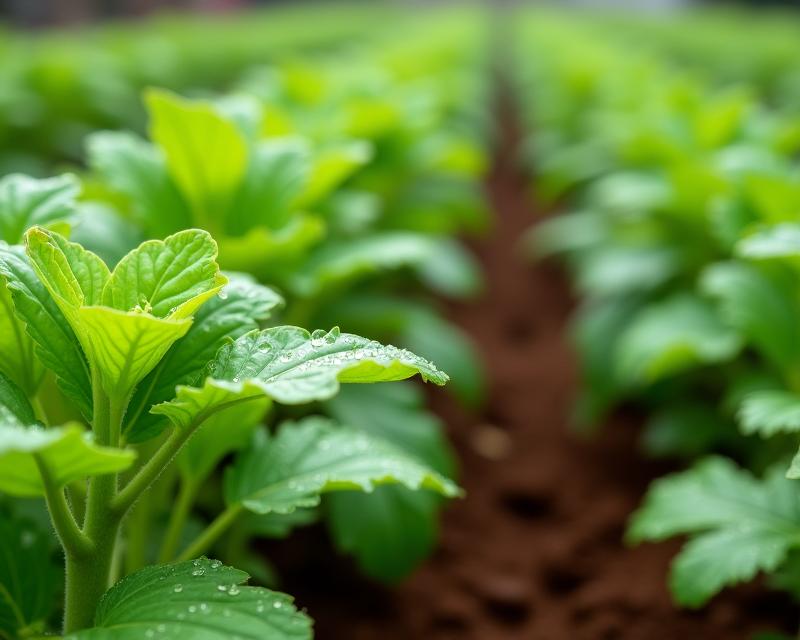Watering Your Veggie Garden: A Guide
Publish in Crops el 23/07/2025 16:35
Watering Your Vegetable Garden: A Guide
Keeping your vegetable garden properly watered is crucial for a bountiful harvest! But how often *should* you water? The answer isn't one-size-fits-all. It depends on a few key factors: your climate, your soil type, and the specific needs of your plants. Let's break it down to help you keep your veggies thriving.

Understanding Your Climate
Climate plays a huge role. In hot, dry climates, you'll need to water more frequently than in cooler, more humid regions. During heat waves, your plants will need almost daily watering, sometimes even twice a day! Monitor the weather forecast closely. Rainfall is a gift, so adjust your watering schedule accordingly. Consider using a rain gauge to track how much precipitation your garden is receiving. Don't forget that wind can also dry out your plants quickly, so windy areas may require more frequent watering.
Soil Type Matters
The type of soil you have significantly impacts how quickly it dries out. Sandy soils drain quickly, meaning you'll need to water more often. Clay soils, on the other hand, retain water for longer, so you can water less frequently. Loamy soil, a mix of sand, silt, and clay, is generally considered ideal because it balances drainage and water retention. To check your soil's moisture, stick your finger about an inch or two into the soil. If it feels dry, it's time to water. If it feels moist, hold off.
Crop-Specific Needs
Different vegetables have different watering requirements. Leafy greens like lettuce and spinach generally need more consistent moisture than root vegetables like carrots and potatoes. Fruiting vegetables like tomatoes and peppers benefit from deep, infrequent watering. This encourages deep root growth, making them more resilient to drought. Here’s a quick guide:
- Tomatoes & Peppers: Water deeply 1-2 times per week.
- Leafy Greens: Water every 1-2 days, especially during hot weather.
- Root Vegetables (Carrots, Beets): Water deeply once a week.
- Legumes (Beans, Peas): Consistent moisture is important, especially during flowering and pod development.
Best Watering Practices
The best way to water is at the base of the plants, avoiding wetting the foliage. Wet leaves can encourage fungal diseases. Drip irrigation or soaker hoses are excellent options for efficient watering. Water deeply, so the water penetrates the soil several inches down. Early morning watering is ideal, as it allows the foliage to dry before nightfall. By paying attention to these factors and adjusting your watering schedule as needed, you can ensure your vegetable garden thrives and provides you with a delicious and rewarding harvest!





